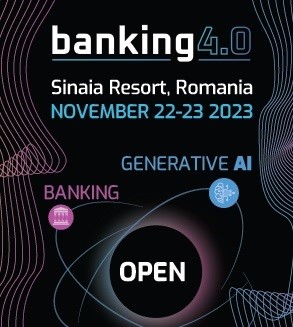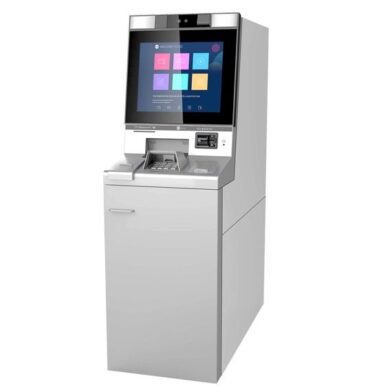As the digital age advances, the banking sector is also evolving, with branch transformation being a key area. The pandemic has accelerated this process, creating both challenges and opportunities for banks. Transaction Systems’ CEE CEO, Panagiotis Chalkias’ keynote speech during the BankTechShow, elaborated on the drivers and challenges of branch transformation and the branch of the future, with new service delivery models.
While many have predicted the disappearance of bank branches, according to Panagiotis Chalkias they will be with us for a long time to come, but their form, size, and function are constantly evolving. The transformation of bank branches is a major challenge of the digital age, and it’s important how it happens.
The transformation aims to ensure that, in addition to new service channels, branches meet the needs of different customer segments, enabling banks to retain their current customers while attracting new ones. Matching the shape and size of branches to different customer needs and harmonizing the channel mix is not an easy task.
Branch transformation is a systematic project to transform traditional branch operations into a customer-centric and user-friendly banking experience that is seamlessly integrated into a true omnichannel process, supported by technology.
“The key to transformation is how branches can become an integral part of the bank’s overall strategy” – highlighted Panagiotis Chalkias.
Chalkias also highlighted the challenges of “omnichannel integration”, stressing that true omnichannel banking is achieved when all the different channels can work within a single framework. This is necessary to ensure the consistent value proposition and rules that customers expect.
“We have heard the term “omnichannel integration” too often. In theory, hundreds of people claim to be implementing omnichannel banking – in practice, I know of only 3-4 platforms that actually do it.” -said Panagiotis Chalkias.
Banks are constantly changing and improving in different segments of their business. If there is no single framework in which to plan and execute these changes, they will have no meaningful impact.
Another challenge of branch transformation is the re-design and re-sizing of the branch’s image. In many cases, these projects are limited to updating the decor, lacking a strategic and integrated approach.
However, Panagiotis Chalkias also acknowledged that there is no real golden rule when it comes to redesigning the branches. We can expect to see different types of branch models depending on the location and segment.
On the subject of technologies related to branch servicing, the Transaction Systems head highlighted the development of automated points of contact.
“In the past, the automated point of contact was just an ATM. Today it can be a machine that prints your new bank card on the spot. Today, recycling terminals are standard and devices specialized for large retailers are available to facilitate bulk deposit.”
As for the branch of the future, in addition to the 24-hour zone and the self-service transaction zone, it is expected to include a “smart” reception desk to help guide customers and a virtual showroom to help them experience products and services.
In addition, new approaches such as “Branch-in-a-box” or “Branch-out-of-branch” models will be introduced, where you can either do 100% of what you would do in a branch yourself or bank staff can take the tools needed to provide essential services with them.
At the end of his presentation, Panagiotis Chalkias also pointed out that branch transformation is not a one-off process, with no fixed start and end date. The biggest obstacles to transformation are legacy systems that can hinder the running of new-generation solutions and traditional procurement procedures and lack of commitment from project members.
In summary, Transaction Systems’ experience shows that branch transformation is not only a technological challenge, but also a strategic one, requiring a holistic approach by banks to meet the needs of the digital age.










































